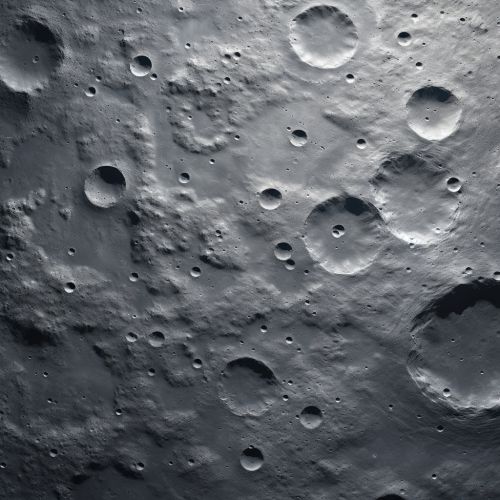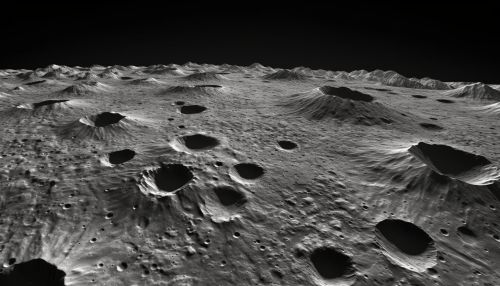Lunar resources
Introduction
The Moon, Earth's only natural satellite, has been the subject of fascination and scientific study for centuries. In recent decades, however, interest has shifted from purely scientific exploration to the potential exploitation of lunar resources. These resources, which include a variety of minerals, volatile compounds, and even solar energy, could play a crucial role in the future of space exploration and colonization.


Lunar Geology and Mineral Resources
The Moon's geology is characterized by a diverse range of mineral resources. The lunar surface, or regolith, is composed primarily of small fragments of rock and mineral grains, including basalt and anorthosite. These rocks are rich in oxygen, silicon, magnesium, iron, aluminum, and calcium, among other elements.
In addition to these common elements, the lunar regolith also contains trace amounts of valuable resources such as gold, platinum, and rare earth elements. These resources could potentially be mined and used in a variety of applications, from electronics manufacturing to the production of spacecraft and other high-tech equipment.
Volatile Compounds
The Moon is also home to a variety of volatile compounds, including water ice. These volatiles are primarily located in permanently shadowed regions at the lunar poles, where temperatures are low enough to prevent their sublimation. The presence of water ice on the Moon is particularly significant, as it could be used to support human life, generate electricity, and produce rocket fuel.
Other volatile compounds present on the Moon include helium-3, a non-radioactive isotope of helium that could potentially be used as a clean and efficient source of nuclear energy. The Moon's regolith also contains traces of hydrogen, ammonia, methane, and carbon dioxide, among other compounds.
Solar Energy
In addition to its mineral and volatile resources, the Moon also offers an abundant supply of solar energy. The lunar surface receives a constant and unfiltered stream of solar radiation, making it an ideal location for solar power generation. This energy could be harnessed to power lunar bases, charge electric vehicles, and support various industrial processes, including the extraction and processing of lunar resources.
Lunar Resource Utilization
The utilization of lunar resources, often referred to as In-Situ Resource Utilization (ISRU), involves the extraction, processing, and use of these resources on the Moon itself. This approach has several advantages over traditional methods of space exploration, which rely on resources launched from Earth.
ISRU could significantly reduce the cost and complexity of lunar missions by reducing the amount of cargo that needs to be launched from Earth. It could also enable long-term human presence on the Moon by providing a sustainable source of water, oxygen, and other essential resources.
Despite these advantages, lunar resource utilization also presents several challenges. These include the technical difficulties associated with mining and processing lunar resources, the need for significant upfront investment, and the legal and ethical issues associated with the exploitation of celestial bodies.
Future Prospects
The future of lunar resource utilization depends on a variety of factors, including technological advancements, economic considerations, and legal and policy developments. Despite these uncertainties, there is a growing consensus among scientists, engineers, and policymakers that the Moon's resources will play a crucial role in the future of space exploration and colonization.
